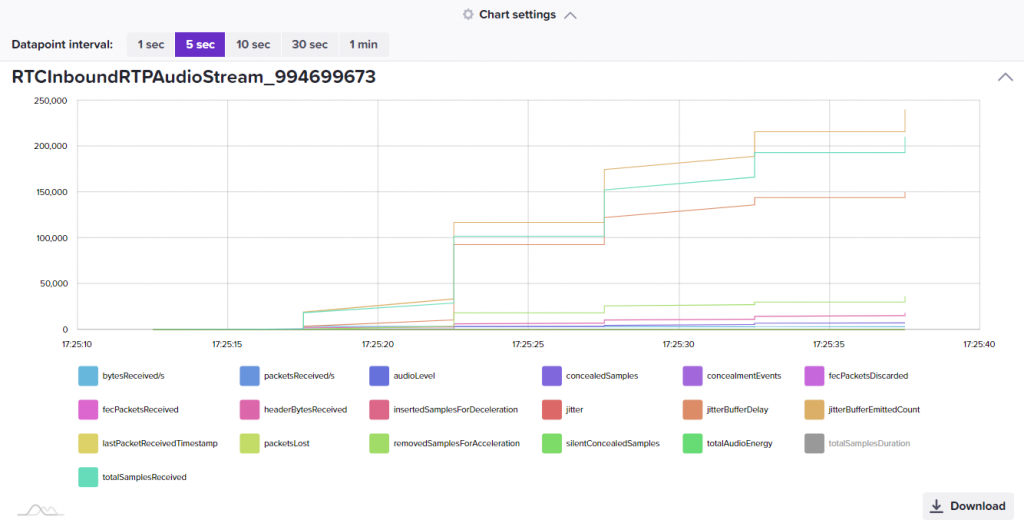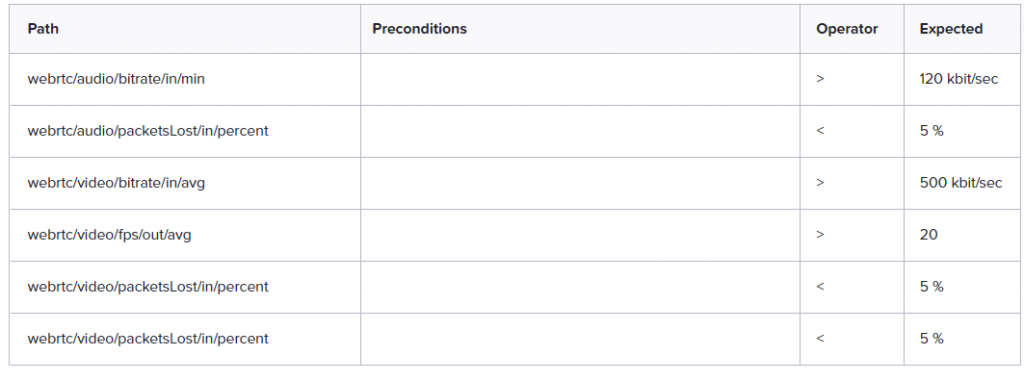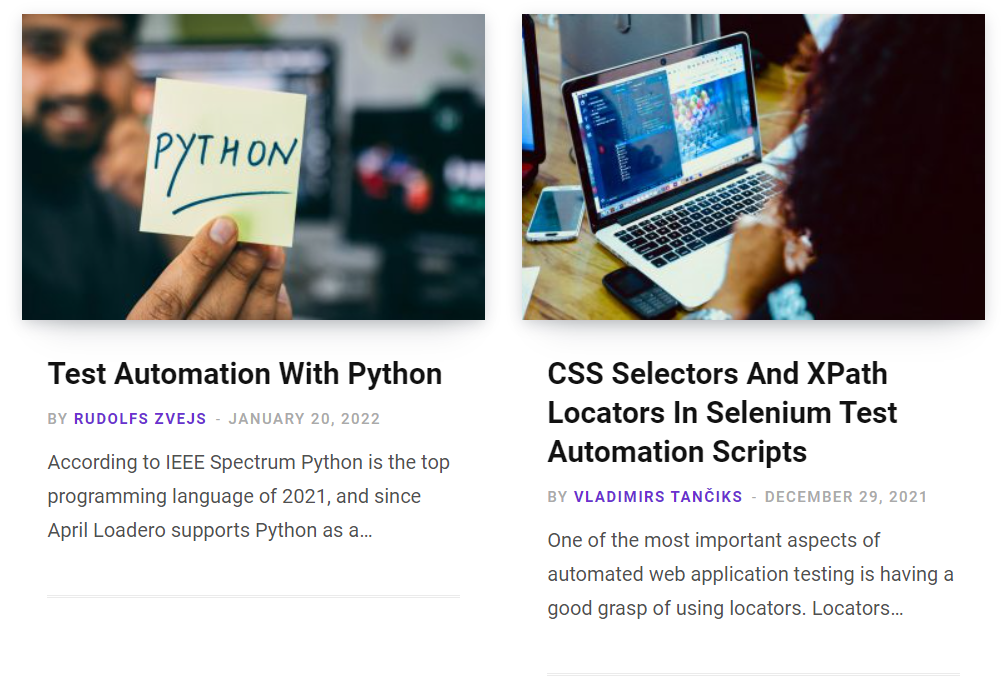We are sure this year holds exciting challenges and opportunities for Loadero and sincerely wish the same for you. As we are already a full month into 2022, it is a great time to share the latest updates our team made to Loadero. Here is what was added to our tool recently.
Improvements to the test results reports
Recently we made multiple changes to the result reports Loadero provides after each test run. One of those is the new graph granularity selector for machine statistics and WebRTC statistics graphs. By default, Loadero uses the datapoint interval of 1 second, but in some cases, especially for long test runs, it is more comfortable to use a longer interval. To allow that we added an option to set 5, 10, 30, and 60 seconds intervals.

Another small improvement that makes reports easier to read is adding the measurement units to the Asserts table of a participant’s results report.

We are also storing video recording start time as Unix timestamp in the filename for video recordings now. If you run your tests in the Session recording mode, you might have noticed that already.

Data on the client-side machine resources usage brings insights to many Loadero users and previously it was available as graphs, a table, and could be asserted. We added another way to work with that data, you can download the machine statistics as JSON data. When you explore an individual participant’s results report, visit the “Logs” tab, it has the machine usage data along with other logs we provide now.

New browser versions are available
As usual, the latest released versions of Google Chrome and Mozilla Firefox are added to Loadero swiftly. Currently, Google Chrome 97 and Mozilla Firefox 96 can be set as your test participant browsers along with 4 previous versions of the browsers.
New posts in our blog
In this blog, we don’t just write about Loadero, but also share our experience in the test automation field. Recently two new blog posts were published.
One of those explains how to use CSS selectors and XPath locators in your Selenium test scripts. The post holds information about using 3 types of CSS selectors: simple selectors, pseudo-selectors, attribute selectors as well as the basics of using XPath to navigate through web pages written in HTML or XML.
The other one shows the basics of test automation with Python. Loadero supports three languages for creating your test scripts, one of which is Python, so if you ever wanted to begin using it for scripting your tests, the blog post is a good start to learn using Python.

Other small changes
Among those bigger updates, there are some small improvements made. For example, we have set a unified screen resolution for all the Selenium instances Loadero uses. Now they have a resolution of 1920 x 1080 pixels.
Another handy update is the used compute units counter, which is visible in the upper right corner of the user interface. It helps to keep updated about your usage of Loadero in the current billing period and keep your expenses under control.

These are all the latest changes we made to Loadero. We are working on some exciting features to be added soon. If there are some features you’d like to see in Loadero, make sure to email us about them, we’d be glad to learn about your needs and explore how we can make Loadero even more useful for your tests.





